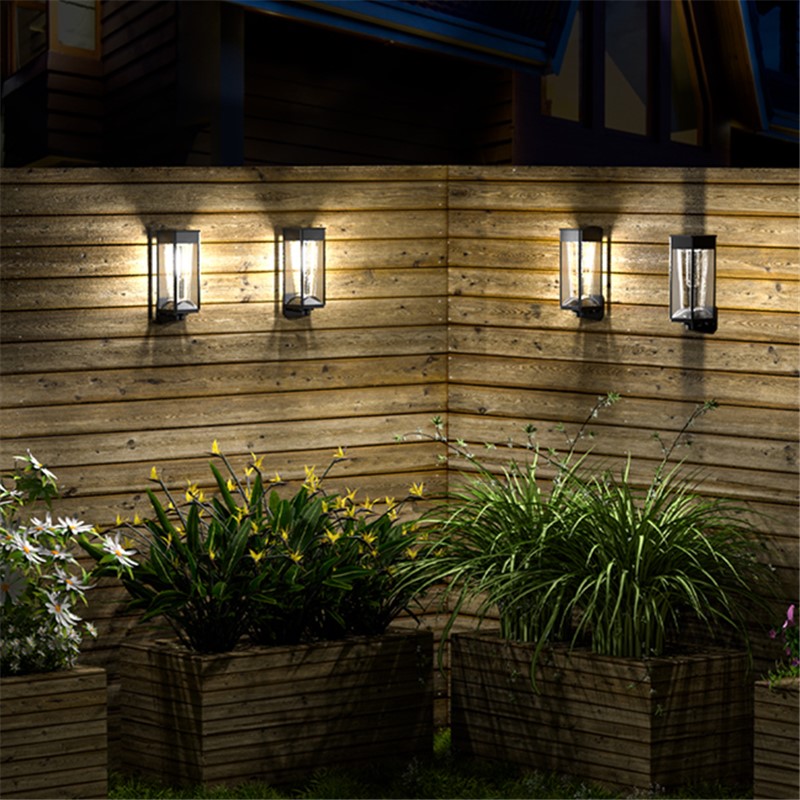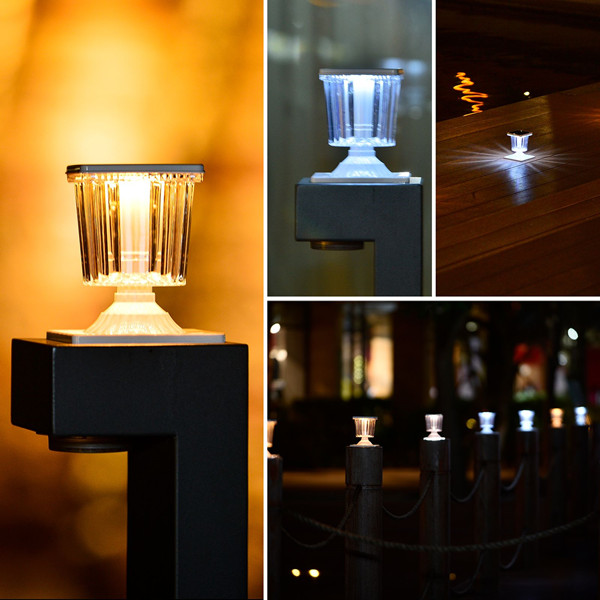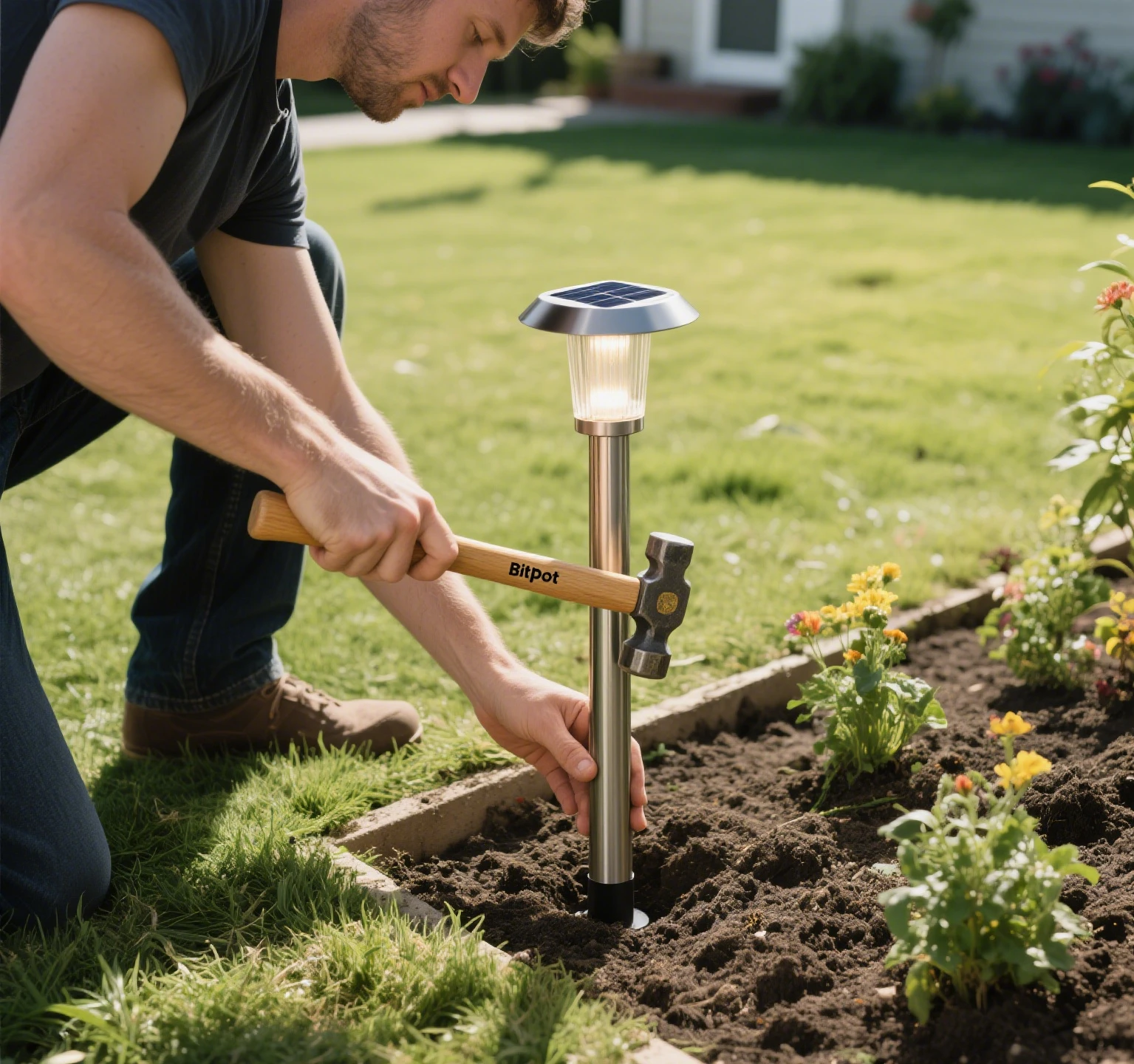Solar lighting is a groundbreaking technology that harnesses sunlight to reduce reliance on conventional energy sources. It captures sunlight through solar panels, converting it into electricity to power lighting devices. During the day, solar panels absorb and store energy in batteries, which is then used to provide illumination at night.
Solar lamps operate independently of the traditional power grid, making them ideal for remote areas or outdoor settings without electricity access. As they use renewable energy, their environmental impact is minimal. Solar lighting is versatile, used in everything from home gardens to urban streets, demonstrating its potential as a sustainable and cost-effective lighting solution.

Key Components of Solar Lighting Systems and Their Functions
Solar Panels
Solar panels are the core of solar lighting systems, converting sunlight into electricity. The main types include:
- Monocrystalline Panels: Known for high efficiency (15%-20%) and durability, these panels perform well in bright sunlight but come at a higher cost.
- Polycrystalline Panels: With a 13%-16% conversion rate, these are more affordable and suitable for areas with less intense sunlight.
At bitpott, we manufacture our own photovoltaic panels, ensuring top-tier quality and efficiency for every product.
Batteries
Batteries store the electricity generated by solar panels for nighttime use. Common types are:
- Lead-Acid Batteries: Cost-effective but bulky, with a 3-5 year lifespan, ideal for large, fixed installations.
- Lithium-Ion Batteries: Compact, lightweight, and with a 5-7 year lifespan, perfect for portable solar lamps.
- LiFePO4 Batteries: A lithium-ion variant with a 7-10 year lifespan, offering enhanced safety and durability, though at a higher price.
bitpott employs advanced testing to ensure our batteries meet rigorous performance and longevity standards, guaranteeing reliable solar lighting systems.
Light Sources
The efficiency and durability of light sources are critical in solar lighting. bitpott uses:
- LED Lights: Highly efficient, long-lasting (up to 50,000 hours), and with 80-100 lumens per watt, LEDs are the go-to choice for solar lighting, offering varied color temperatures.
- SMD LEDs: These provide wider angles and higher efficiency (90-110 lumens per watt).
- COB LEDs: With up to 120 lumens per watt, these are ideal for focused, high-brightness applications.
Our rigorous testing ensures every LED meets high standards for brightness, efficiency, and longevity.
Charge Controllers
Charge controllers manage battery charging and discharging to optimize system performance. The two main types are:
- PWM Controllers: Cost-effective, suitable for smaller, budget-conscious projects.
- MPPT Controllers: More efficient (20%-30% higher charging efficiency), ideal for maximizing energy use in larger systems.
bitpott selects controllers based on project needs, ensuring optimal performance and durability under varying conditions.
Advantages and Disadvantages of Solar-Powered Lighting Solutions
Advantages
- Eco-Friendly: Solar lighting uses renewable energy, producing near-zero carbon emissions, reducing CO2 by about 1.2 tons annually compared to traditional lighting.
- Energy Efficiency: With 80-100 lumens per watt, solar lights are up to 80% more efficient than traditional bulbs (16-20 lumens per watt).
- Cost Savings: Solar lights eliminate electricity bills, potentially saving $500 over five years compared to $100 annually for traditional lights.
- Easy Installation: As standalone units, they require no grid connection, simplifying setup and maintenance.
- Durability: High-quality solar lights last 5-7 years or more, outlasting conventional options.
- Incentives: Some countries offer tax credits or rebates, like up to 30% in the U.S. or subsidies in Germany, encouraging adoption.
Disadvantages
- Initial Cost: Solar lighting systems can cost twice as much to install as traditional ones.
- Weather Dependency: Efficiency drops 40%-50% in cloudy or rainy conditions.
- Battery Lifespan: Batteries typically need replacement every 5-7 years, adding to maintenance costs.
- Geographic Limitations: Efficiency is lower in high-latitude or low-sunlight areas.
- Seasonal Challenges: Reduced daylight in winter or rainy seasons can limit charging and lighting duration.
Selecting the Ideal Solar Light for Your Specific Needs
Outdoor Lighting
Selecting the right solar light depends on its purpose, location, and lighting needs:
- Solar Street Lights: Ideal for roads, pathways, or parks, providing reliable, safe illumination.
- Solar Wall Lights: Perfect for porches or garage doors, offering compact, automated lighting.
- Solar Landscape Lights: Enhance gardens or ponds with aesthetic and functional designs.
- Portable Solar Systems: Lightweight and versatile, great for camping or emergencies.
Indoor Lighting
- Solar Table Lamps: Blend practicality and style for homes or offices, offering soft, energy-efficient light.
- Solar Chandeliers: Suit high-ceiling spaces, providing broad illumination and decorative appeal.
- Solar Music Lamps: Combine lighting with music playback, appealing to younger, tech-savvy users.

Installation and Maintenance Tips for Solar Lighting Systems
Installation Tips
- Preparation:
- Choose a location with maximum sunlight exposure.
- Clear obstacles to avoid shading the solar panel.
- Gather tools like shovels, screwdrivers, or ladders.
- Solar Street Lights:
- Install in sunny areas, avoiding shadows.
- Adjust height and angle for optimal coverage.
- Solar Wall Lights:
- Mount on sun-exposed walls at appropriate heights.
- Solar Landscape/Decorative Lights:
- Place to balance aesthetics and sunlight exposure.
- Portable Solar Systems:
- Position panels to face the sun for efficient charging.
- Safety:
- Ensure power is off during installation.
- Use compliant tools and secure all components.
Maintenance Tips
- Clean Panels Regularly: Remove dust or snow with a soft cloth to maintain efficiency.
- Inspect Components: Check bulbs, batteries, and casings for wear, replacing as needed.
- Winter Care: Clear snow and ice from panels to ensure charging.
- Adjust Angles: Tilt panels seasonally for optimal sunlight capture.
- Post-Storm Checks: Inspect for stability and damage after harsh weather.
Conclusion
Partnering with bitpott, a leading solar lighting manufacturer, ensures premium, eco-friendly lighting solutions at great value. Our innovations not only illuminate spaces but also promote sustainable living. For any solar lighting inquiries, reach out to us.
Frequently Asked Questions About Solar Lighting
How efficient is solar lighting in rainy or winter conditions?
Efficiency drops in rain or winter due to weaker sunlight, operating at 10%-25% capacity on cloudy days. Regular snow removal ensures functionality in winter.
What is the lifespan of solar lights?
Solar lights last 5-7 years, with panels enduring 20+ years. Batteries typically require replacement every 5-7 years for optimal performance.
What are key solar lighting terms?
- Photovoltaic (PV): Converts sunlight into electricity.
- LED: Energy-efficient, long-lasting light source.
- Lumens (lm): Measures brightness; higher lumens mean brighter light.
- Watts (W): Indicates panel power output.
- CRI: Shows how true colors appear under light.
- Kelvin (K): Defines light color temperature (warm to cool).
- Amp: Measures electrical current flow.
- Battery Capacity (Ah): Indicates stored energy.
- Charge Controller: Regulates power to prevent battery damage.
- Auto-Switch: Automatically turns lights on/off based on daylight.


Leave a Reply